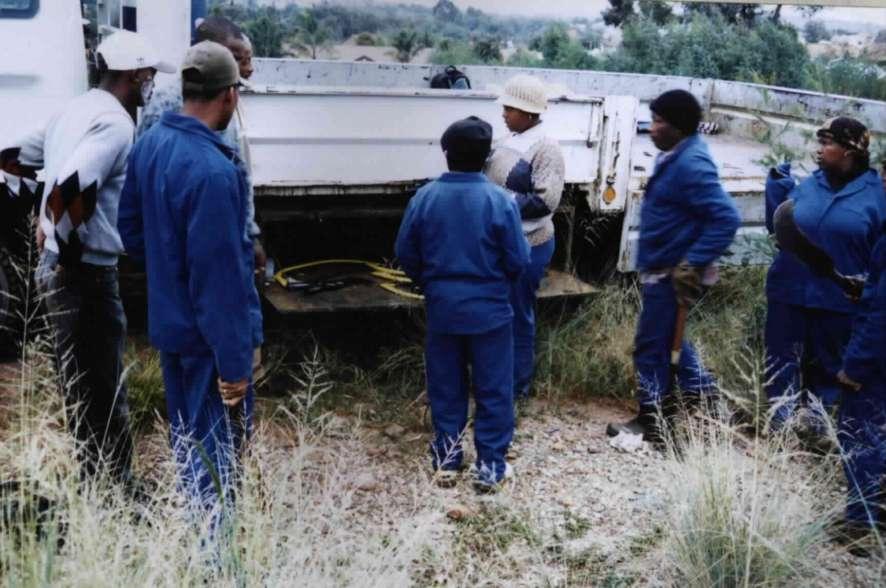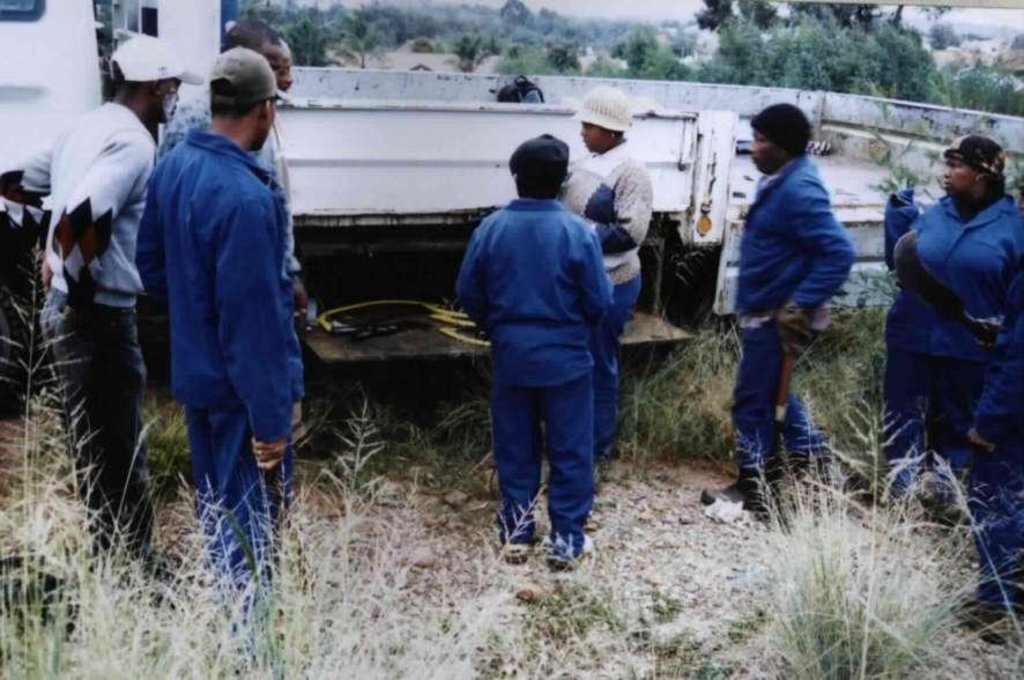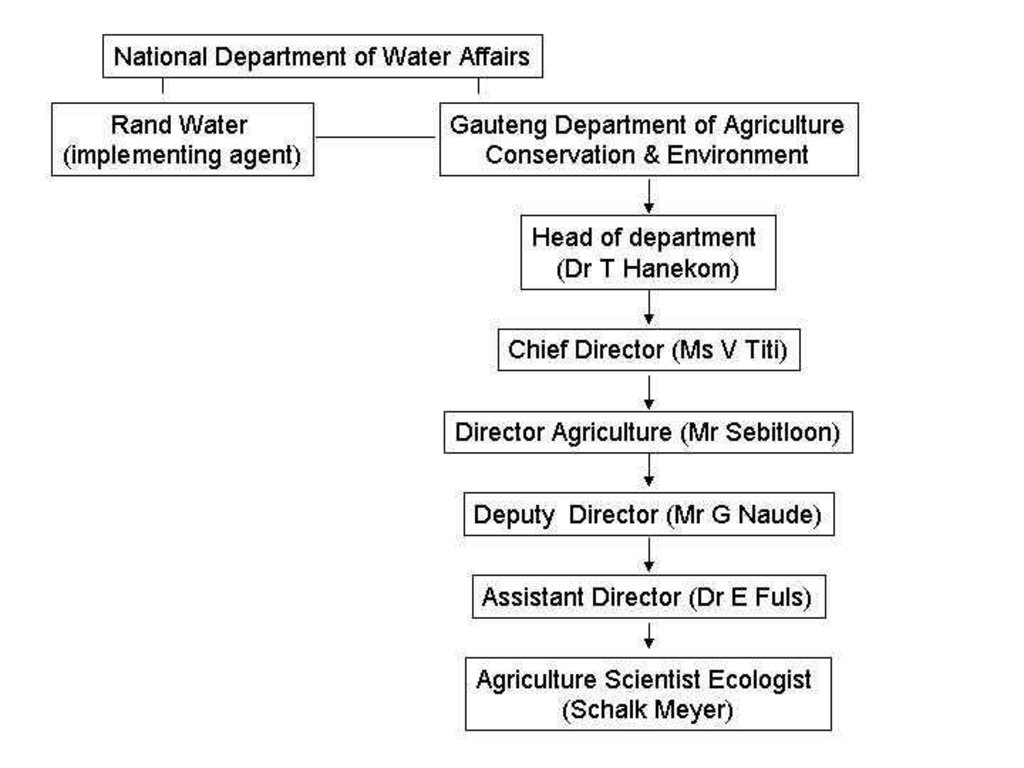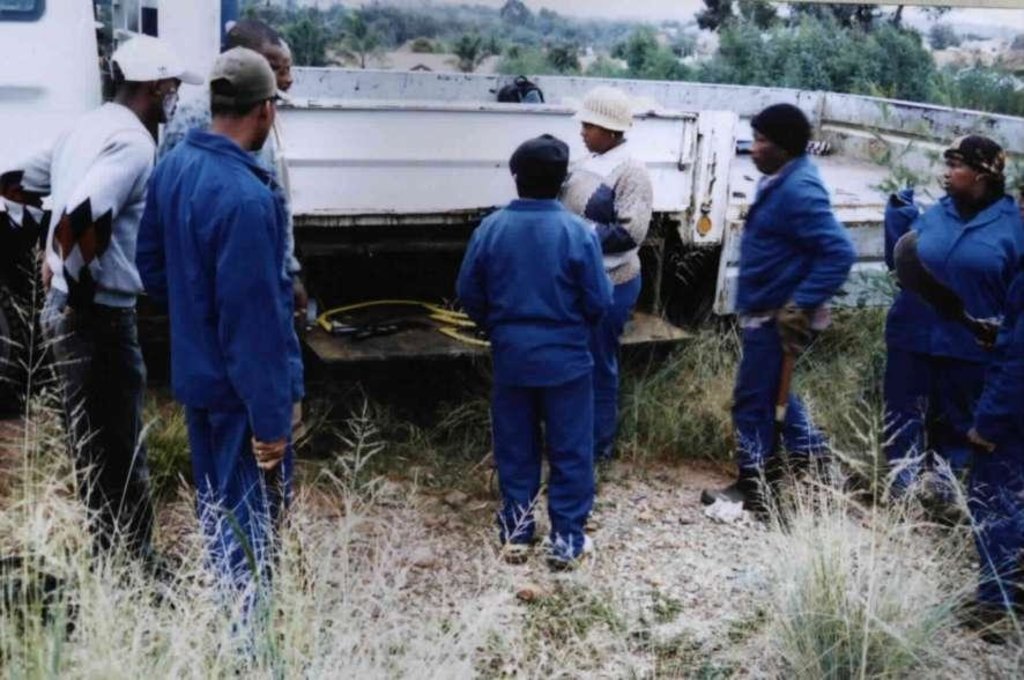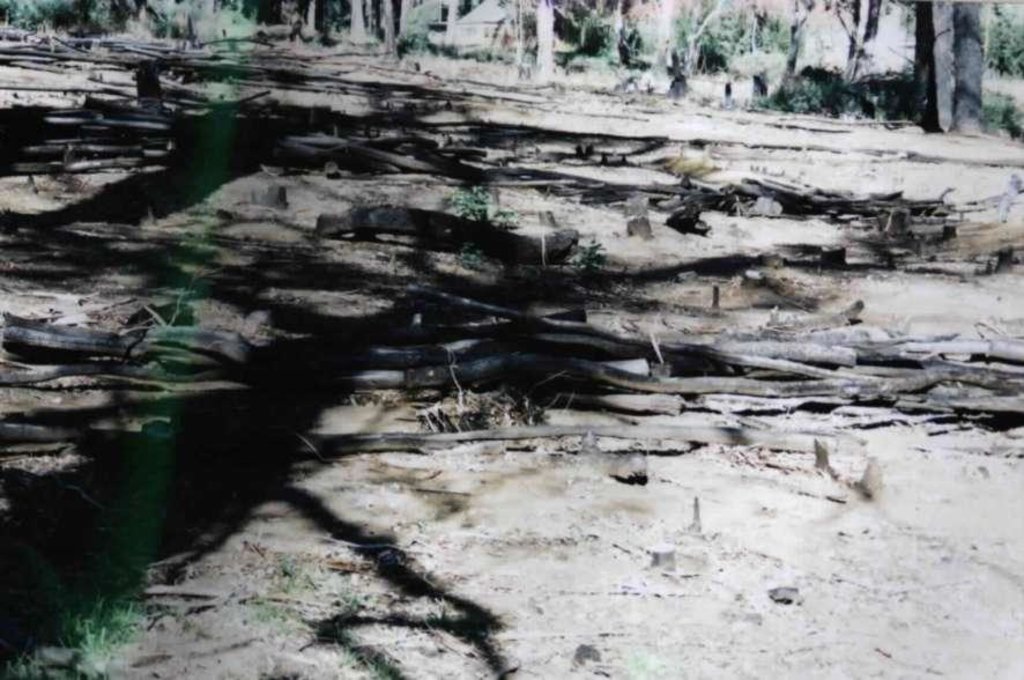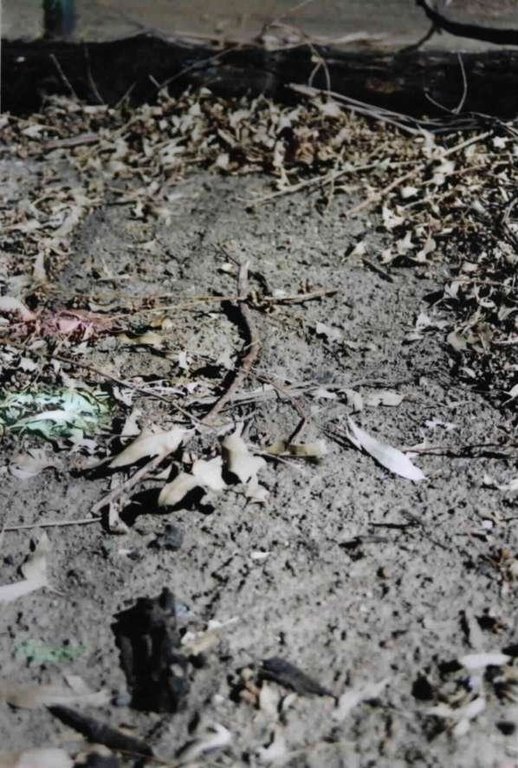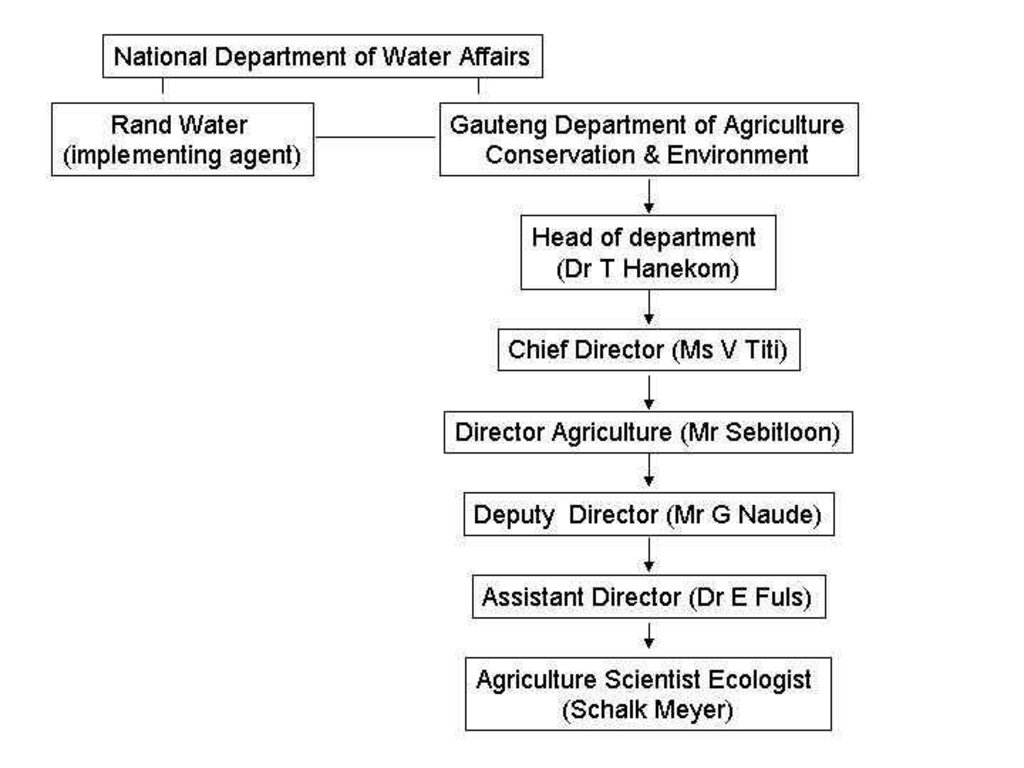Technical and scientific support & Job creation in community sector (poorest of the poor) [South Africa]
- Creation:
- Update:
- Compiler: Philippe Zahner
- Editor: –
- Reviewer: Fabian Ottiger
approaches_2346 - South Africa
View sections
Expand all Collapse all1. General information
1.2 Contact details of resource persons and institutions involved in the assessment and documentation of the Approach
SLM specialist:
den Hulk Harmen
011 355 12 66
Gauteng Department of Agriculture and Rural Development
PO Box 8769, Johannesburg 2000
South Africa
Name of the institution(s) which facilitated the documentation/ evaluation of the Approach (if relevant)
Swiss Agency for Development and Cooperation (DEZA / COSUDE / DDC / SDC) - SwitzerlandName of the institution(s) which facilitated the documentation/ evaluation of the Approach (if relevant)
Gauteng Department of Agriculture and Rural Develo (Gauteng Department of Agriculture and Rural Develo) - South Africa1.3 Conditions regarding the use of data documented through WOCAT
The compiler and key resource person(s) accept the conditions regarding the use of data documented through WOCAT:
Ja
1.4 Reference(s) to Questionnaire(s) on SLM Technologies
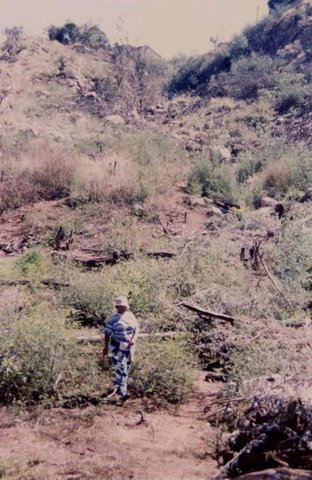
Combating of invader plants and bush packing [South Africa]
The combating of Invaders to preserve water resources & the rehabilitation of the bare ground by means of brush packing to prevent soil erosion.
- Compiler: Unknown User
2. Description of the SLM Approach
2.1 Short description of the Approach
To make the community aware of precious resources like water and the preservation of it, the control of alien encroachment, creation of job opportunities and the training of the undeveloped communities.
2.2 Detailed description of the Approach
Detailed description of the Approach:
Aims / objectives: The approach objective is to get communities involved in a national project to eradicate alien invaders to conserve the water resource in the main river catchment areas. The objectives of such a project are to make use of labour (job creation) under the poorest of the poor of the rural communities. A group of 25 people was trained in the use of chemicals; cutting down and eradication of trees and alien invaders in an effective manner, as well as different opportunities for entrepreneurs to utilise the wood, for example fire wood and charcoal. The Government is the implementing agent, facilitates and manages the project as well as providing technical advice.
2.3 Photos of the Approach
2.5 Country/ region/ locations where the Approach has been applied
Country:
South Africa
Region/ State/ Province:
Gauteng Province
Map
×2.6 Dates of initiation and termination of the Approach
Indicate year of initiation:
1998
Year of termination (if Approach is no longer applied):
1999
2.7 Type of Approach
- project/ programme based
2.8 Main aims/ objectives of the Approach
The Approach focused mainly on SLM with other activities (Community upliftment, training (availability of more farm soils), job creation, enhanced grazing capacity.)
Community awareness. Training. Education. Job creation. Uplifting of the poor. Mutual understanding and better communication and labour relations.
The SLM Approach addressed the following problems: Language differences (S.A. contains 11 different official languages). Literacy of the workers. Unqualified people -> expensive training courses. Too many role-players that hampered the initial starting process
2.9 Conditions enabling or hindering implementation of the Technology/ Technologies applied under the Approach
social/ cultural/ religious norms and values
- hindering
Workers out of different cultures
Treatment through the SLM Approach: Field manager must be appointed that know the people and came out of the same community
legal framework (land tenure, land and water use rights)
- enabling
The existing land ownership, land use rights / water rights moderately helped the approach implementation: Improving resource soil and water.
3. Participation and roles of stakeholders involved
3.1 Stakeholders involved in the Approach and their roles
- local land users/ local communities
Rand Water (implementing agent)
Working land users were mainly women (Policy requires that 60% of the employees of the Government suppose to be black and female.)
- national government (planners, decision-makers)
Department of Water Affairs and Forestry
3.2 Involvement of local land users/ local communities in the different phases of the Approach
| Involvement of local land users/ local communities | Specify who was involved and describe activities | |
|---|---|---|
| initiation/ motivation | none | |
| planning | passive | public meetings |
| implementation | external support | casual labour |
| monitoring/ evaluation | passive | public meetings; |
| Research | none |
3.3 Flow chart (if available)
3.4 Decision-making on the selection of SLM Technology/ Technologies
Specify who decided on the selection of the Technology/ Technologies to be implemented:
- SLM specialists alone
Explain:
directive (top-down). Government officials
Decisions on the method of implementing the SLM Technology were made by by SLM specialists alone (top-down). directive (top-down). Experts on the method
4. Technical support, capacity building, and knowledge management
4.1 Capacity building/ training
Was training provided to land users/ other stakeholders?
Ja
Specify who was trained:
- land users
Form of training:
- on-the-job
- courses
Subjects covered:
Use of hand-tools: chainsaws, handsaws, pangas etc. Also the use of backpack herbicide sprayers
4.2 Advisory service
Do land users have access to an advisory service?
Ja
Specify whether advisory service is provided:
- at permanent centres
Describe/ comments:
Working for Water, Alien plant eradication; Key elements: Financial act, Catchment areas, Job creation; 1) Advisory service was carried out through: government's existing extension system 2) Advisory service was carried out through: government's existing extension system; Extension staff: mainly government employees 3) Target groups for extension: land users, technicians/SWC specialists; Activities: Job creation & training; Inhouse experience & training
Advisory service is inadequate to ensure the continuation of land conservation activities; Funds were cut and only one follow-up will be done and the clearing of new catchment areas from aliens are stopped due to financial and political instability.
4.3 Institution strengthening (organizational development)
Have institutions been established or strengthened through the Approach?
- yes, moderately
Specify the level(s) at which institutions have been strengthened or established:
- local
Specify type of support:
- financial
- capacity building/ training
4.4 Monitoring and evaluation
Is monitoring and evaluation part of the Approach?
Ja
Comments:
bio-physical aspects were ad hoc monitored through observations
socio-cultural aspects were ad hoc monitored through observations
economic / production aspects were ad hoc monitored through observations
area treated aspects were ad hoc monitored through observations
no. of land users involved aspects were ad hoc monitored through measurements
management of Approach aspects were regular monitored through observations
There were no changes in the Approach as a result of monitoring and evaluation
4.5 Research
Was research part of the Approach?
Ja
Specify topics:
- ecology
Give further details and indicate who did the research:
Research on Rangeland reinforcement
Research was carried out on-farm
5. Financing and external material support
5.1 Annual budget for the SLM component of the Approach
Comments (e.g. main sources of funding/ major donors):
Approach costs were met by the following donors: government (national): 100.0%
5.2 Financial/ material support provided to land users
Did land users receive financial/ material support for implementing the Technology/ Technologies?
Ja
5.3 Subsidies for specific inputs (including labour)
- equipment
| Specify which inputs were subsidised | To which extent | Specify subsidies |
|---|---|---|
| machinery | fully financed | |
| fully financed | ||
- agricultural
| Specify which inputs were subsidised | To which extent | Specify subsidies |
|---|---|---|
| seeds | fully financed | |
If labour by land users was a substantial input, was it:
- paid in cash
Comments:
Salary
5.4 Credit
Was credit provided under the Approach for SLM activities?
Nee
6. Impact analysis and concluding statements
6.1 Impacts of the Approach
Did the Approach help land users to implement and maintain SLM Technologies?
- No
- Yes, little
- Yes, moderately
- Yes, greatly
Control of alien growth
Did other land users / projects adopt the Approach?
- No
- Yes, little
- Yes, moderately
- Yes, greatly
6.3 Sustainability of Approach activities
Can the land users sustain what has been implemented through the Approach (without external support)?
- no
If no or uncertain, specify and comment:
Too expensive
6.4 Strengths/ advantages of the Approach
| Strengths/ advantages/ opportunities in the land user’s view |
|---|
| Improved grazing (How to sustain/ enhance this strength: Protect area from over grazing and eradicate seedlings and re-growth) |
| Improved live standard with job creation |
| Strengths/ advantages/ opportunities in the compiler’s or other key resource person’s view |
|---|
| Job creation |
| Training |
| Eradication of aliens/protect water resource (How to sustain/ enhance this strength: Follow-up on regrowth) |
| Awareness towards land care |
6.5 Weaknesses/ disadvantages of the Approach and ways of overcoming them
| Weaknesses/ disadvantages/ risks in the land user’s view | How can they be overcome? |
|---|---|
| Project/work/job creation only for 3 months (for the duration of the project) |
| Weaknesses/ disadvantages/ risks in the compiler’s or other key resource person’s view | How can they be overcome? |
|---|---|
| Maintenance of land user, follow-up on re-growth | Subsidy |
| Financial availability |
7. References and links
7.1 Methods/ sources of information
- field visits, field surveys
- interviews with land users
7.2 References to available publications
Title, author, year, ISBN:
Reports and businessplans
Available from where? Costs?
Department of Agriculture & Department of Water Affairs (no costs)
Links and modules
Expand all Collapse allLinks

Combating of invader plants and bush packing [South Africa]
The combating of Invaders to preserve water resources & the rehabilitation of the bare ground by means of brush packing to prevent soil erosion.
- Compiler: Unknown User
Modules
No modules


